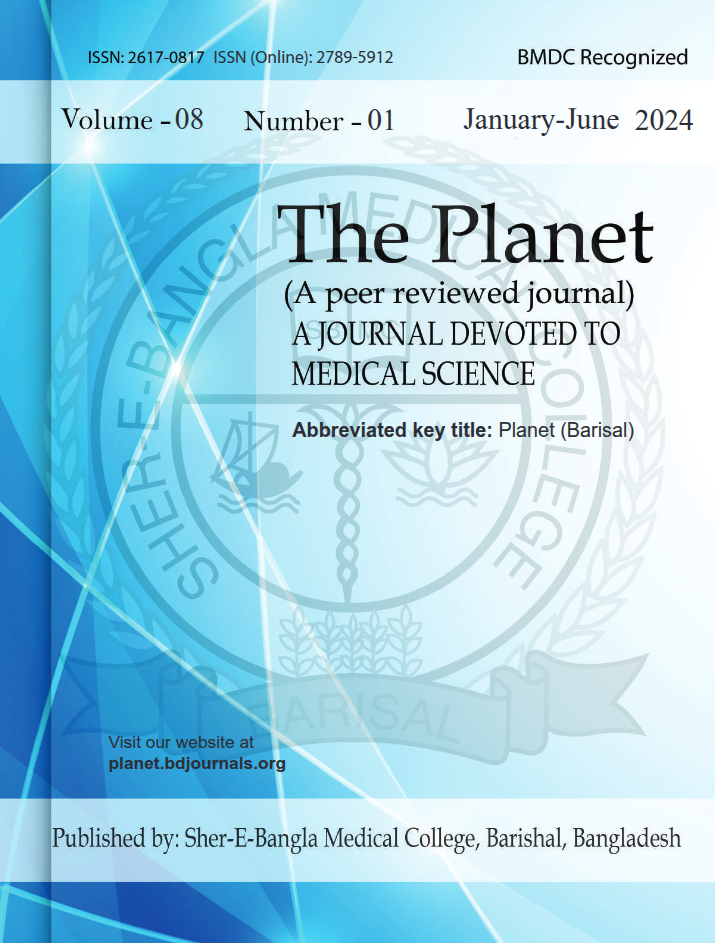Published 28-12-2024
Keywords
- Placenta previa,
- Cesarean hysterectomy,
- Maternal morbidity,
- Blood transfusion,
- Perinatal outcome
Copyright (c) 2024 The Planet

This work is licensed under a Creative Commons Attribution 4.0 International License.
How to Cite
Abstract
Background: Placenta previa, particularly when associated with prior cesarean deliveries, poses a high risk for massive hemorrhage and may necessitate cesarean hysterectomy. In low-resource settings, the management of such cases is further complicated by limited antenatal care and referral systems. The objective of the study is to assess maternal morbidity and complications following cesarean hysterectomy in placenta previa patients in a tertiary hospital in Bangladesh. Methods & Materials: This observational cross-sectional study included 50 patients diagnosed with placenta previa over a six months period. Data on patient demographics, risk factors, surgical history, intraoperative events, postoperative complications, and neonatal outcomes were collected and analyzed descriptively. Results: Among the 50 placenta previa cases, 10 (20%) required cesarean hysterectomy. Of these, 60% had ≥2 prior cesarean sections and 50% had central placenta previa. All hysterectomy patients required blood transfusion, with 30% needing more than five units. Postoperative complications occurred in 50% of hysterectomy cases, including wound infection (20%) and DIC (10%). Neonatal outcomes revealed 30% low birth weight and 24% NICU admissions. Conclusion: Cesarean hysterectomy in placenta previa is associated with significant maternal and neonatal morbidity, particularly among women with prior cesarean scars. Improving antenatal care and surgical preparedness is critical to reduce adverse outcomes in such high-risk pregnancies.



